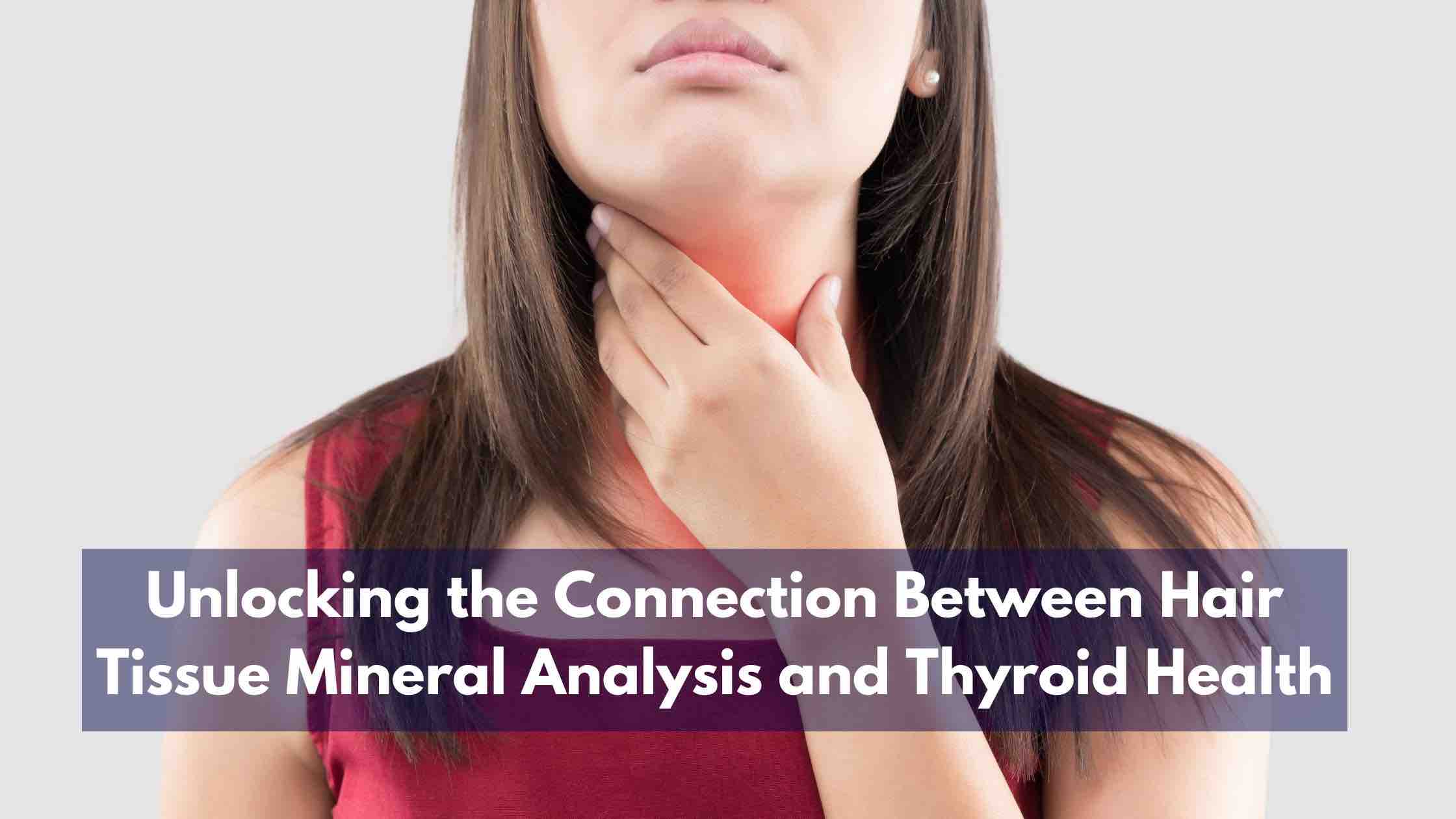Hair tissue mineral analysis (HTMA) is a diagnostic tool that uses hair samples to assess mineral imbalances and toxic heavy metal levels in the body. This test has gained popularity in recent years as a way to detect and treat various health conditions, including thyroid issues. While blood tests can give a point in time assessment of thyroid function, HTMA provides a long term metabolic reading as it measures mineral levels in hair that is grown over recent months. This gives a deeper insight into a person’s biochemistry over time.
The thyroid gland, located in the neck, produces hormones that regulate the body’s metabolism. When the thyroid gland is not functioning properly, it can result in a range of symptoms, including fatigue, weight gain or loss, hair loss, and changes in body temperature.
Research has shown that mineral imbalances and toxic heavy metals can contribute to thyroid dysfunction. HTMA can help identify these imbalances and provide insights into the underlying causes of thyroid issues.
One mineral that is closely linked to thyroid health is iodine. The thyroid gland requires iodine to produce its hormones. Low iodine levels can lead to hypothyroidism, a condition where the thyroid gland is not producing enough hormones. On the other hand, excessive iodine intake can lead to hyperthyroidism, where the thyroid gland is producing too many hormones. By referring to mineral levels and ratios in the hair (such as the calcium to potassium ratio), HTMA can help determine if there is excessive or reduced thyroid activity at a cellular level. This can inform nutritional adjustments in order to optimise thyroid function.
Another mineral that can impact thyroid function is selenium. Selenium is essential for the conversion of thyroid hormones from their inactive to active forms. Low levels of selenium can impair this conversion, leading to hypothyroidism. Conversely, high levels of selenium can lead to hyperthyroidism. HTMA can help determine if selenium levels are optimal for thyroid health.
Additionally, toxic heavy metals like mercury, lead, and cadmium can interfere with thyroid function. These metals can disrupt the conversion of thyroid hormones and damage the thyroid gland. HTMA can help identify toxic heavy metal levels and guide detoxification protocols to remove them from the body.
In conclusion, HTMA is a valuable tool for assessing mineral imbalances and toxic heavy metal levels that can contribute to thyroid dysfunction. By identifying these imbalances, practitioners can develop personalized and accurate treatment plans to support optimal thyroid health. If you are experiencing symptoms of thyroid dysfunction, consider discussing HTMA with a hair mineral analysis practitioner.

